
Viana do Bolo

Viana do Bolo
Entroido en
Viana do Bolo
The carnival in Viana do Bolo has its own name: “Entrudio”. This designation is accompanied by elements deeply rooted in the traditions and rituals of the area. The “Entrudio” has its own character in the eastern locality of the province of Ourense.

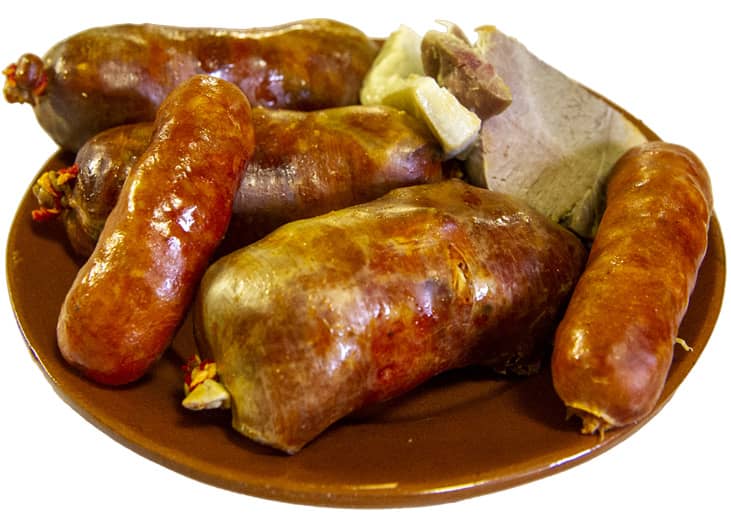
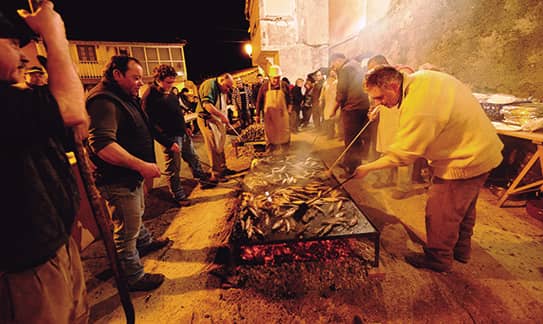


Fulións, boteiros, comparsas...
“Fulións”, “boteiros”, “comparsas”, “mula”, and “patumada” or floats define a celebration where the playful and the earthly live together in harmony.
All accompanied, as is customary in Galicia, by a quality gastronomy that also in Viana has a reference product: "androlla”.
”Entrudio” is a sensory journey where visitors enjoy decades of traditions brought to the present.
Characters
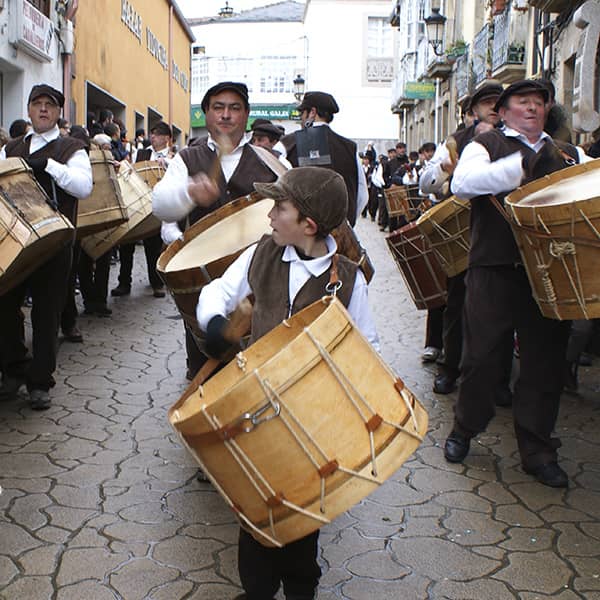
Fulións
“Entrudio” vibrates to the sound of these peculiar musical groups that tour the towns of the municipality of Viana do Bolo, visiting each other in a rhythmic alliance of communities. In the “fulións”, the percussion of the bass drums is combined with other improvised instruments: shovels, scythes, and other farming tools from which sounds are extracted.
From two weeks before the start of the carnival, different “fulións” roam the streets of Viana's towns, preparing the population for the arrival of the festival. These “fulións”, led by the “boteiros”, have their big day on Fat Sunday, when they participate with floats in the central parade of the carnival festivities.
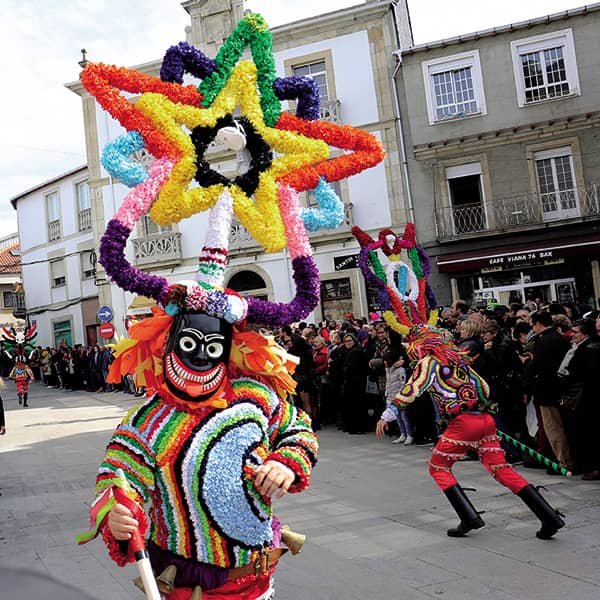
Boteiro
The figure of the “boteiro” is undoubtedly the most representative of Viana's Entrudio. This character is the master of ceremonies of the “fulión” in his charge, leading it with races and jumps.
His peculiar attire consists of a shirt with strips of fabric sewn on, forming colorful lines and figures. Lace and trimmings also adorn the trousers, made of red fabric. On the belt, the bells dance announcing the presence of the “boteiro”.
The central element of the costume is its screen, a structure composed of wire covered in strips of colored tissue paper. The mask covering the face of the person acting as “boteiro” is also very representative, with its mask painted black highlighting a wide, mocking, and intimidating smile.
The costume is completed with the "monca," a long stick with which this character clears his way.
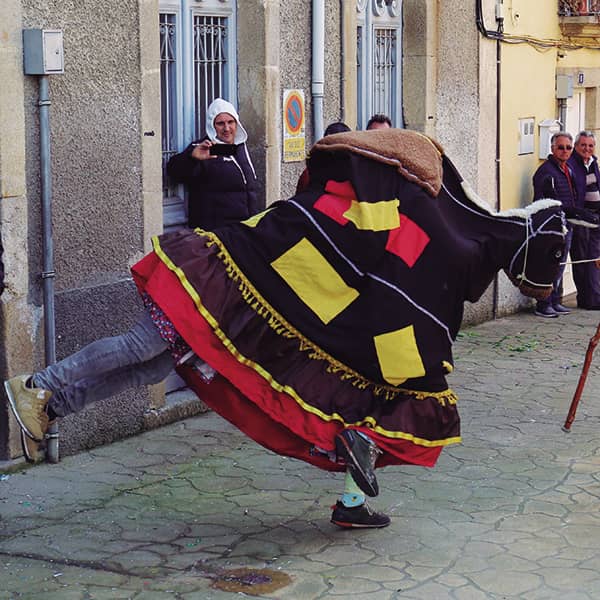
Mula
Another of the elements that make “Entrudio” unique in Viana do Bolo. This creature consists of a framework that imitates the animal, under which two people hide who are responsible for moving the structure.
The mule parades with the “fulións” and stands out as one of the most rebellious carnival figures. The one in charge of directing it is the "maragato." The animal continually disobeys its driver, between kicks and sudden movements, and clears the way for the procession while interacting with the public.
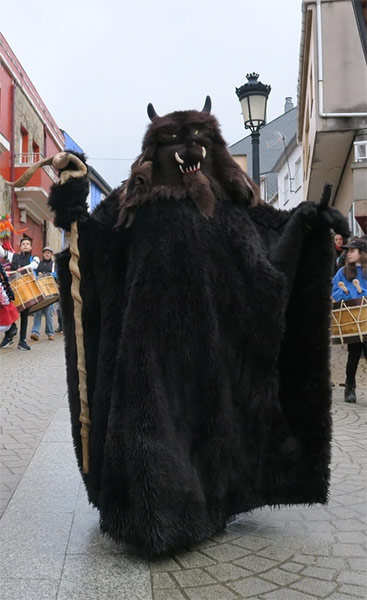
Patumada
This “Entrudio” character remains exclusive to one of the villages within the municipality:” Fornelos de Filloás”. The patumada assumes an animal-like guise and parades alongside the “fulión” and the “boteiro”.
Heir to a varied tradition of characters within the proceessions, its recovery is recent and enriches the cultural diversity that is the Viennese Carnival.

Comparsas and Disputes
Comparsas are groups of neighbors from the same village, who traverse the streets of the towns of Viana do Bolo to perform a series of theatrical representations in a satirical and humorous tone: the disputes.
These pieces feature a series of fixed characters or roles that are repeated, such as the director, the lady or madam, the clown, the musicians, the “boteiros”, and the "vellos das esquilas." In their plots, the disputes explore stories and situations from everyday life, revisited through wit, humor, and mischief.
A tradition reminiscent not only of neighboring municipalities, such as the "foliadas" of Vilariño de Conso or Manzaneda, but also of other distant carnivals.
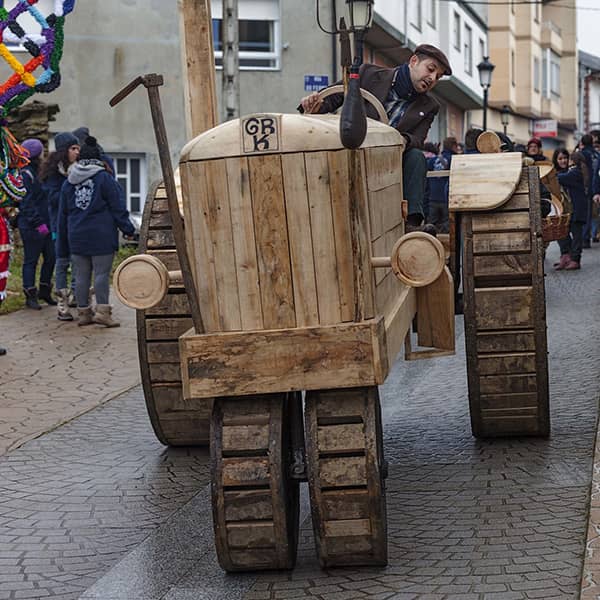
Photo: Agustín Hernández
The Floats
In the parade of “fulións and boteiros” on Fat Sunday in Viana do Bolo, there is a third protagonist: the floats. These mobile monuments are crafted by different localities and collectives within the municipality.
The floats depict various motifs, from everyday occasions in the village to scenes related to current events, passing through allegorical themes.
Their elaboration is an ode to craftsmanship, where all kinds of materials coexist through structured scaffolding under complex mechanics.
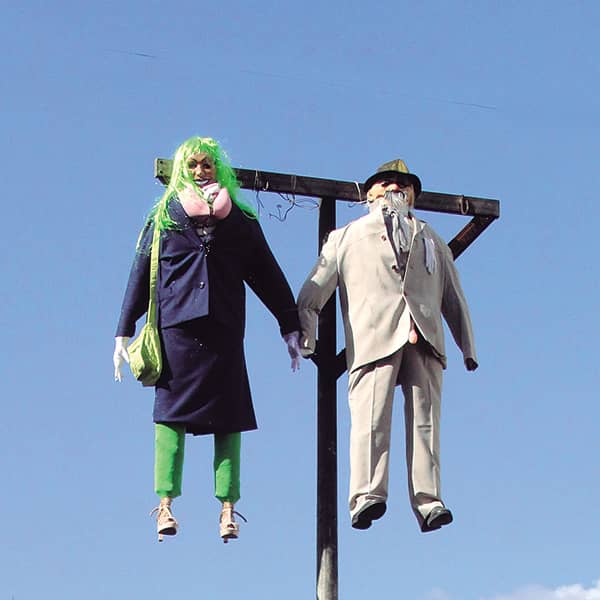
Lardeiro and Lardeira
Other key characters of Entrudio, which find their correspondence in Viana do Bolo, are the "lardeiro" and the "lardeira." On Compadres' Thursday, ten days before the start of the carnival, the women of the village hang the "lardeiro," a doll dressed in the clothes of the men of the village that traditionally, these men had to try to take down.
A week later, it is the turn of the locals, who are responsible for preparing and hanging the "lardeira," this time dressed in garments of the women of Viana.
This peculiar couple will remain hanging until “Entrudio's Tuesday” when it will be sought out to be burned at midnight on Ash Wednesday.
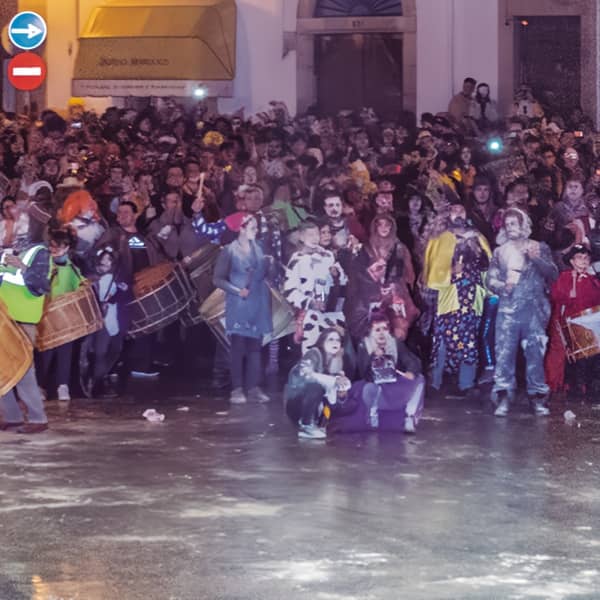
Fariñada
In the fights between men and women to hang and unhung the "lardeiro" and "lardeira," battles of flour or "fariñadas" occur, in which any person who happens to be in the village, whether fortunate or not, becomes involved.
Far from being limited to Compadres' and Comadres' Thursdays, "fariñadas" are common during the days of Viana's Entrudio. At any moment, in any locality of the municipality, a flour war can begin.
Calendar of Activities 2024

• January 27: Female Fulión Parade:

• February 1: Compadres' Thursday

• February 3: Comparsas

• February 8: Comadres' Thursday
In the morning, the spotlight is on the youth of Viana do Bolo, with a parade starting from noon featuring students from CEIP Bibei and the fulión from IES Carlos Casares.
From eight in the evening, the "fariñada" and the fulións return to the streets of the town, followed by various musical performances until late at night.

• February 10: Entrudio Saturday

• February 11: Fat Sunday
Next, the 52nd edition of “the Festa da Androlla”celebrates with a meal where this preparation can be tasted along with other typical dishes and foods of the season and the region. In the afternoon, the “fulións” return to traverse the town, followed by musical performances.

• February 12: ”Entrudio” Monday

• February 13: “Entrudio “Tuesday

• February 14: Ash Wednesday
Videos of the Viana do Bolo Entroido
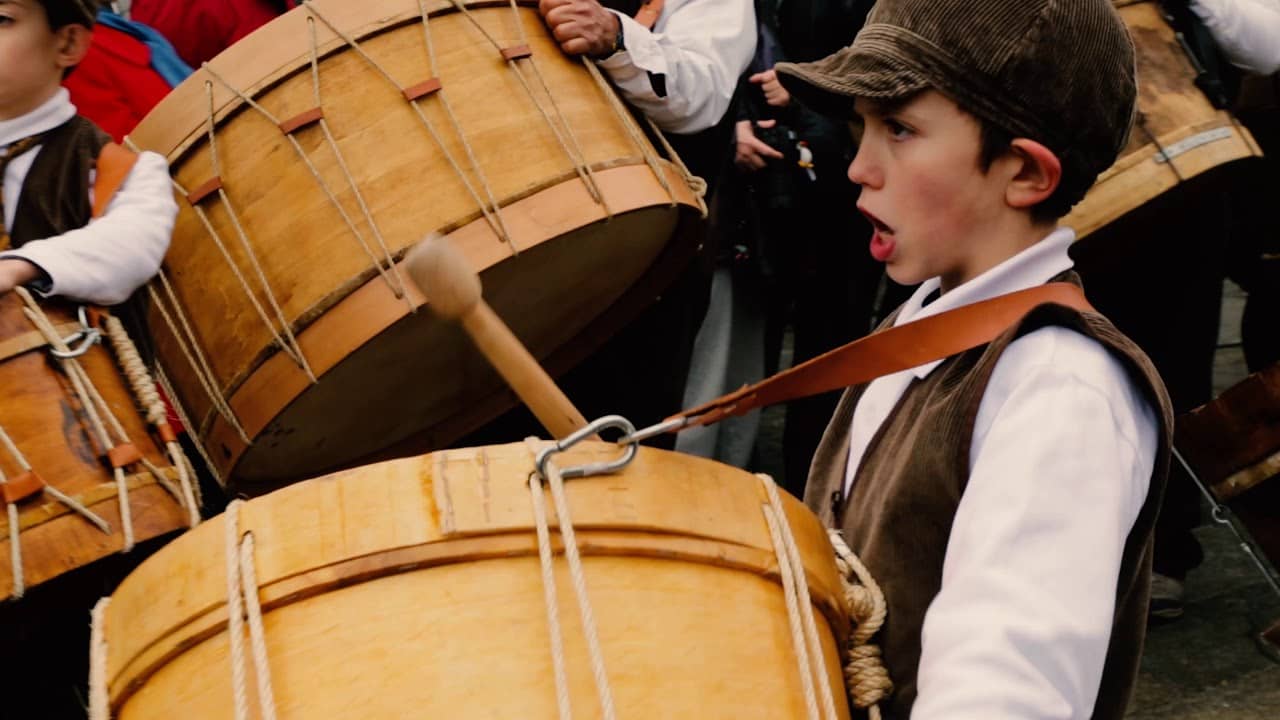
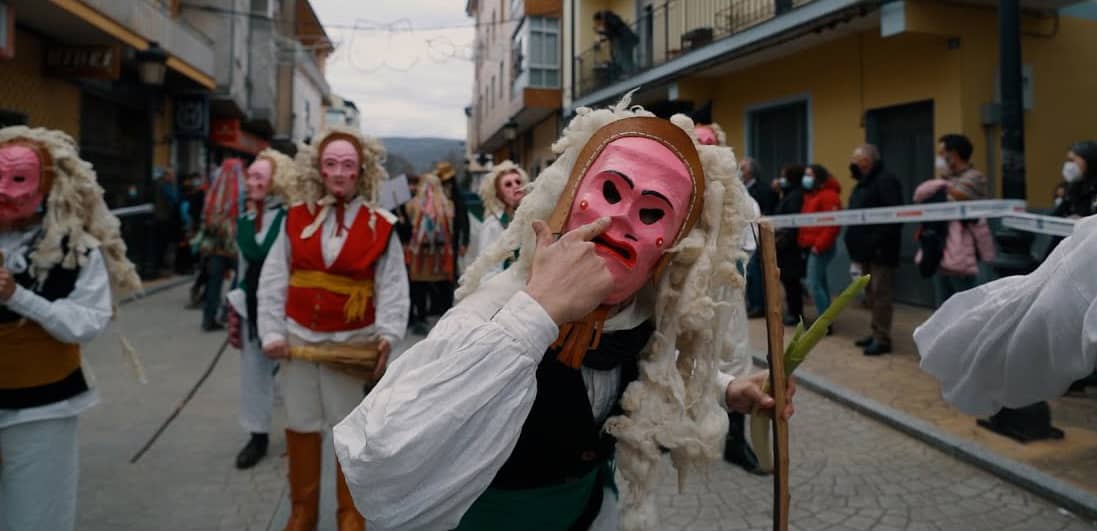
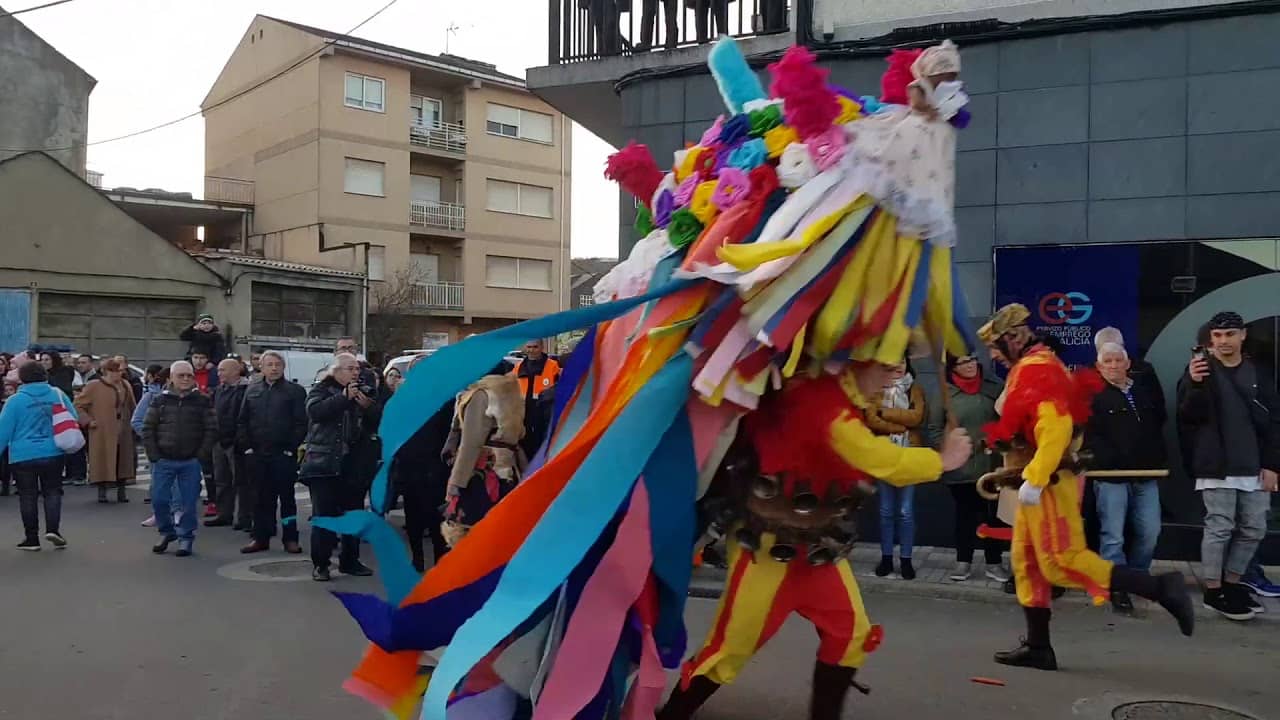
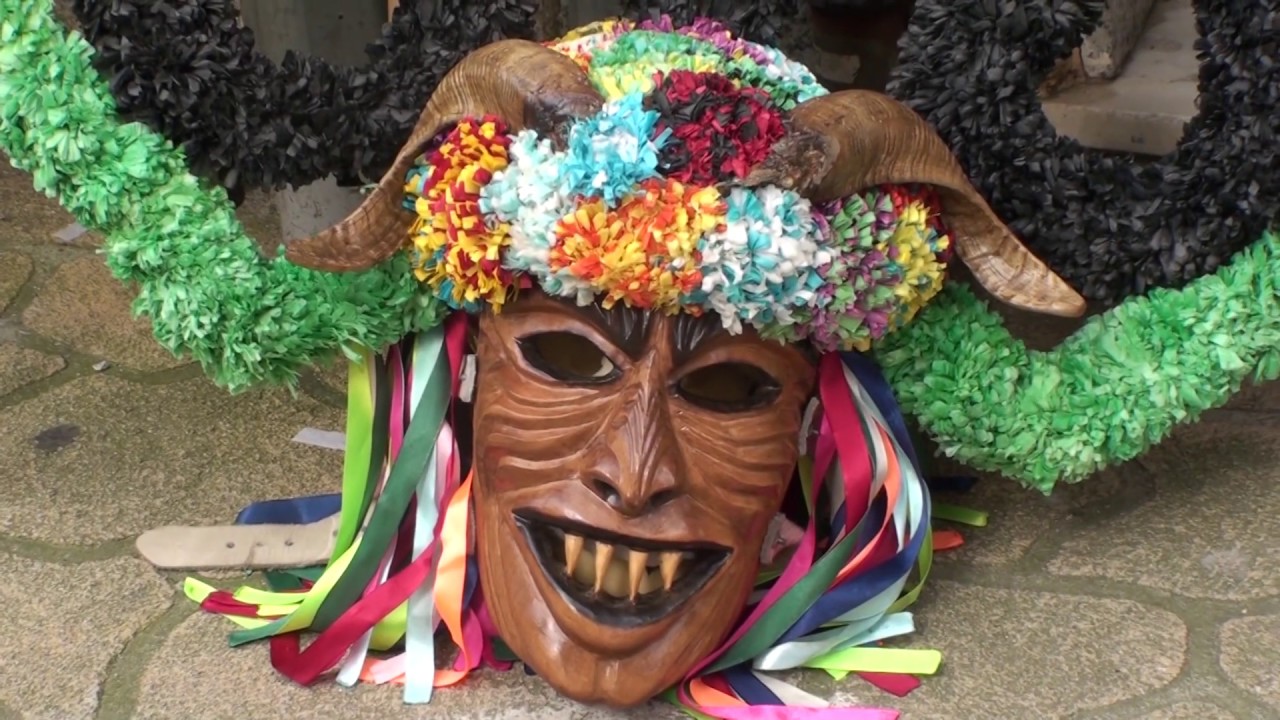

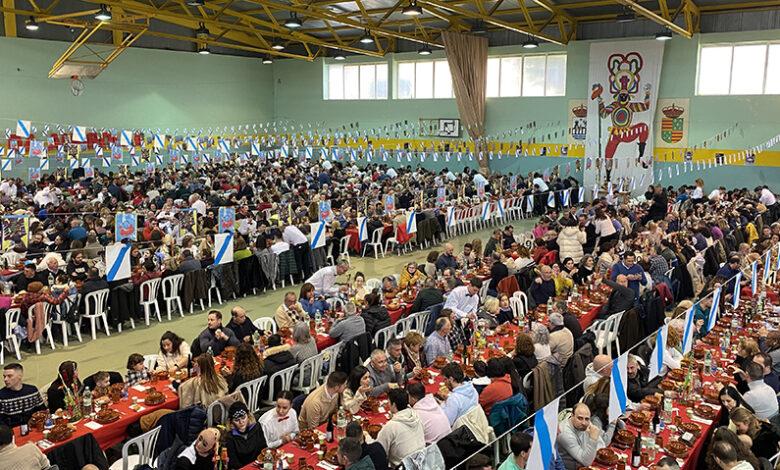
Gastronomy
“Entrudio” in Galicia has its own gastronomy, with "cocido," "filloas," and "orellas" as its main emblems. In Viana do Bolo, this is joined by a unique product: "androlla," the protagonist of its own festival since 1970, which coincides with Fat Sunday.
"Androlla" consists of a smoked, thick casing filled with marinated and chopped pork ribs, reminiscent of "botelo" from El Bierzo. The festival is usually accompanied by other typical foods of the season and the region, and for dessert, a sweet typical of the area: "bica de Viana," a kind of buttery sponge cake.
Festa da Androlla
This gastronomic festival has been celebrated in Viana do Bolo since 1970. The star of the show is the "androlla," which gathers thousands of enthusiasts in this unique celebration of local cuisine.
This product is made with marinated pork ribs stuffed into thick casings, smoked, and cured.
In the menu of the Festa da Androlla, it is common to find other typical products of Galician cuisine for this season, such as "lacón con grelos" (pork shoulder with turnip greens) and "cachelos" (boiled potatoes). "Cocido" is the quintessential meal of Entrudio in the region, which combines pork-derived products such as "cachucha," "cacheira," chorizo, bacon, or the aforementioned "lacón".
On the sweet side, it is typical to serve "bica de Viana" at the festival. "Bica," a buttery sponge cake with multiple versions throughout Galicia, has its own identity in the Viana territory, and is recognized as such on this occasion. Wines, liqueurs, and the traditional "queimada" accompany the meal.


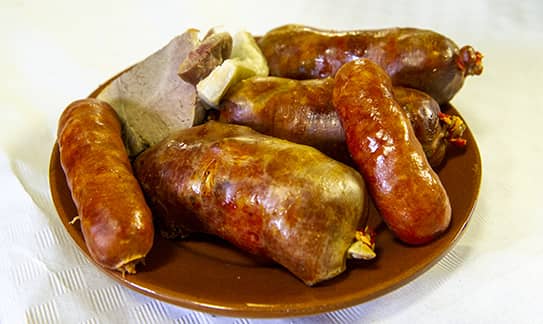
More information
For more information about dates and events of the Entruido in Viana Do Bolo, you can contact the Town Hall of the locality.
